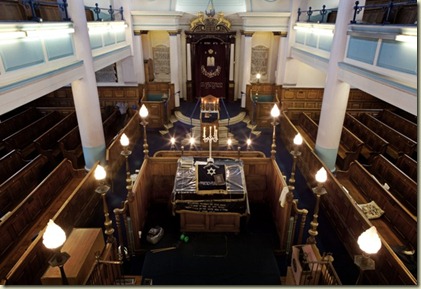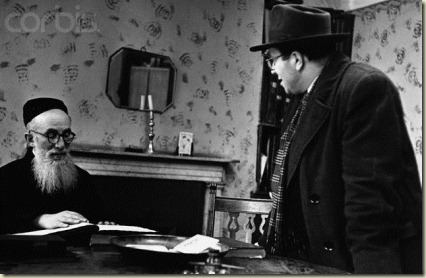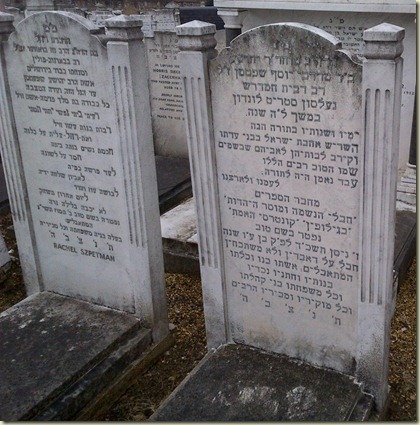Last Friday (7 Nisan) was the Hebrew yortzeit of Rabbi Yehosua Szpetman about whom I wrote in this post.
Born in Lublin, Poland in 1887/8 he was the rabbi for 35 years at the Nelson Street Synagogue which was one of the larger shuls in the East End. (According to the link above there were two Nelson Street Synagogues.) A reader has helpfully pointed me to A World Apart by Harry Rabinowicz for biographical details.
According to Rabinowicz the rabbi "was not afraid to criticise spiritual or lay leaders. He hated untruths, dishonesty and hypocrisy. He frowned on displays of pretentiousness and was unique in tolerance and sympathy. He spoke more like a prophet than a preacher. He enlivened any gathering with his wit, eccentricity and his healthy irreverence. He befriended the Chasidic rebbes in London and graced most of their functions. He was popularly called the 'Red Rabbi', the Jewish counterpart of his contemporary the Dean of Canterbury, Dr Hewlett Johnson."
It’s a shame they don’t make rabbis like that any more and I hereby declare him patron saint of this blog.
 His views on the Chief Rabbinate are as relevant today as there were in 1947 when he wrote in a letter to the JC "…I suggest now that Anglo-Jewry is about to elect its spiritual head, would it not be appropriate earnestly to consider dispensing with the so-called title 'Chief Rabbi…"
His views on the Chief Rabbinate are as relevant today as there were in 1947 when he wrote in a letter to the JC "…I suggest now that Anglo-Jewry is about to elect its spiritual head, would it not be appropriate earnestly to consider dispensing with the so-called title 'Chief Rabbi…"
Rabbi Szpetman was naturalised as a British citizen in May 1952 and it is interesting to read the list of new citizens for that month and the large proportion of Jewish names.
Rabbi Szpetman died on 20 March 1964 (7 Nisan 5724) and is buried beside his wife at the Federation Cemetery on Montague Road in Edmonton (down the road from the Prince and Princess hall). That plot contains quite a few East End rabbis from that era who are unfortunately largely forgotten.
He wrote several books in Yiddish and I’ve listed a few below. The first three can be downloaded and one is topical for Pesach. The first is a collection of speeches where you get more than a flavour of his fiery oratory and his warm humanity. A fuller bibliography is available here.
חבלי הנשמה ומוסר היהדות; לכבוד ראש השנה יום כפור שמחת תורה; פסח, ל”ג בעומר, שבועות; בגילופין, פארגאנגענע וועלטן
תנצב”ה


Hi, I am the niece of rabbi szpetman's son, David who died in Jerusalem. Would you have any idea where he may be buried? Thanks.Lonnie Lonnie.morris@outlook. Com
ReplyDeleteidmaWsponyu_2001 Jan Roberts https://wakelet.com/wake/4z3hj1J_3rbGQC-JXT6VS
ReplyDeleteeninjsonle
NracoiFar_seFort Lauderdale Dereck Goon Avid Pro Tools
ReplyDeleteYandex browser
Affinity Designer
orestworun